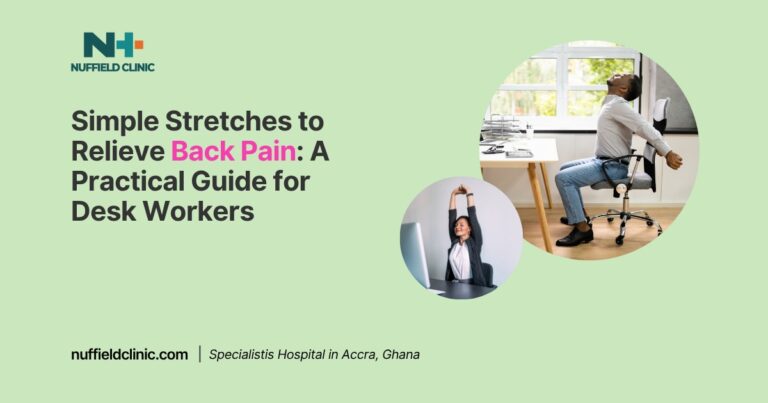Why a Sudden Limp in Your Child Needs Immediate Attention

How seriously should you take a sudden limp in your child? A child’s gait is an intricate reflection of health. When a sudden limp emerges, especially in the absence of a clear injury, it can mark the onset of a condition that requires urgent evaluation. While the cause might be minor, such as a transient strain or benign inflammation, the range of potential diagnoses includes conditions with irreversible consequences if left untreated. As a Physical Therapist, recognising the urgency behind a limp is not about causing alarm, but about ensuring no opportunity for timely care is missed.
Subtle Signal, Significant Implications
Limping is not a diagnosis. It is a presentation, an observable change in the child’s normal walking pattern, often resulting from pain, weakness, mechanical obstruction, or neurological disruption. Parents may initially believe it to be temporary, but clinical experience supports a cautious approach: any limp lasting more than 48 hours warrants a professional assessment.
Children may be unable to articulate their discomfort clearly, and because referred pain is common, they might point to their knee when the pathology lies in the hip. This disconnect between symptom location and origin can obscure the clinical picture. As a result, a thorough assessment of joints above and below the site of pain becomes essential.
Understanding the Range of Causes
A child’s limp may stem from a wide array of conditions. Minor causes include muscle soreness following vigorous activity, transient synovitis of the hip, or discomfort from recent immunisation. These typically resolve without intervention.
However, more serious causes demand immediate recognition. Fractures may occur with minimal trauma and evade initial imaging. Infections such as septic arthritis or osteomyelitis can evolve rapidly and cause permanent joint or bone damage. Certain developmental disorders, including slipped capital femoral epiphysis (SCFE) or Legg-Calvé-Perthes disease, also initially present with limping. Malignancies like Leukaemia or bone tumours, though rare, may present with intermittent or nocturnal pain before any other symptoms are evident.
Systemic signs often accompany serious conditions. Fever, weight loss, night sweats, or lethargy should broaden clinical suspicion beyond orthopaedic causes, shifting the focus to systemic disease. A limp paired with such findings may represent the only early outward sign of a potentially life-threatening pathology.
Recognising Red Flags
When evaluating a limping child, certain features should immediately prompt emergency referral. These include inability to bear weight, sudden onset of intense pain, limb deformity, or systemic features such as high fever, chills, or marked fatigue. Some signs can be subtle, such as irritability, refusal to move, or poor appetite, but when they occur with a limp, they become clinically relevant.
Severe abdominal pain or visible limb asymmetry may indicate intra-abdominal causes or vascular compromise. Nocturnal pain that wakes the child from sleep, or worsening symptoms over a short timeframe, points toward a pathology that cannot be left to observation.
Conditions That Require Urgent Action
Fractures and Trauma
Toddler’s fractures may result from low-impact injuries, presenting as a refusal to walk rather than visible trauma. Stress fractures in older children can occur from overuse, especially in athletes. Compartment syndrome, a surgical emergency, presents with escalating pain and subtle behavioural changes like increasing agitation. Vascular injuries with diminished pulses or colour change also demand immediate attention.
Non-accidental trauma must always remain on the differential, particularly in young children who are not yet mobile. Inconsistencies in history or specific fracture patterns should raise concern and lead to multidisciplinary evaluation.
Septic Arthritis and Osteomyelitis
Septic arthritis, particularly of the hip, can deteriorate rapidly. In such cases, joint damage and avascular necrosis may develop within 24 to 48 hours. Early signs include pain with movement, refusal to bear weight, fever, and holding the limb in a specific position for comfort. The absence of swelling does not rule out deep joint involvement, especially in the hip. Imaging, such as ultrasound, becomes invaluable in identifying joint effusions even when radiographs are unremarkable.
Osteomyelitis, a bone infection, often progresses subtly. Children may present with a limp, mild fever, and localised tenderness. Initial radiographs may be normal, which necessitates a high index of suspicion and advanced imaging like MRI for confirmation.
Developmental Conditions
SCFE typically occurs during adolescence and may present with knee or thigh pain despite originating in the hip. Affected children often walk with an externally rotated foot and report increased discomfort after activity. Prompt diagnosis is vital to prevent complications like avascular necrosis or early osteoarthritis. Similarly, Legg-Calvé-Perthes disease, often affecting younger children, involves an interrupted blood supply to the femoral head. If identified early, conservative treatment can preserve hip structure and prevent degenerative joint disease in adulthood.
Malignancies
Leukaemia and bone tumours, such as osteosarcoma or Ewing sarcoma, may initially present with vague bone pain and limping. These symptoms can mimic benign conditions, leading to diagnostic delay. Night pain, systemic symptoms like weight loss or pallor, and unresponsiveness to rest or typical treatments should prompt further investigation.
The Diagnostic Approach
A detailed clinical history and physical examination form the foundation of assessment. Inquiries should include recent trauma, infection, travel history, systemic symptoms, and family medical background. Gait analysis reveals compensatory mechanisms and may help localise the source of discomfort.
Examination extends beyond the area of reported pain. For instance, internal rotation and flexion of the hip may elicit pain in a child who reports knee symptoms. Assessment of muscle tone, joint swelling, limb length, and neurovascular integrity provides valuable clues.
If clinical signs suggest a serious pathology, imaging studies are initiated. X-rays remain a first-line investigation but may be supplemented by ultrasound or MRI for deeper structures. Laboratory tests, including inflammatory markers and blood cultures, assist in identifying infection or systemic disease. Blood counts are critical when malignancy is suspected, while autoimmune markers may support a diagnosis of inflammatory arthritis.
Timeliness Matters
In conditions such as septic arthritis and SCFE, early diagnosis directly influences the outcome. For septic arthritis, irreversible damage can begin within days. SCFE requires surgical stabilisation to prevent femoral head collapse. Delays in diagnosing Perthes disease may limit the effectiveness of conservative management.
In oncology, early detection improves survival rates and reduces the intensity of required therapy. A limp that appears trivial may be the earliest clue to systemic disease.
Guiding Families with Confidence
Parents should be encouraged to seek evaluation even when unsure of the cause. A limp that does not improve within a few days, or one that returns after initial resolution, is not considered normal. When red flag symptoms are present, such as inability to walk, persistent fever, or worsening pain, emergency care should be sought.
Clinical vigilance, supported by a structured and compassionate approach, ensures children receive the care they need without unnecessary delay. Physical Therapists, in particular, play an essential role in early recognition and appropriate referral, forming a critical link in the continuum of pediatric care. You can book a consultation with a specialist paediatrician today.







